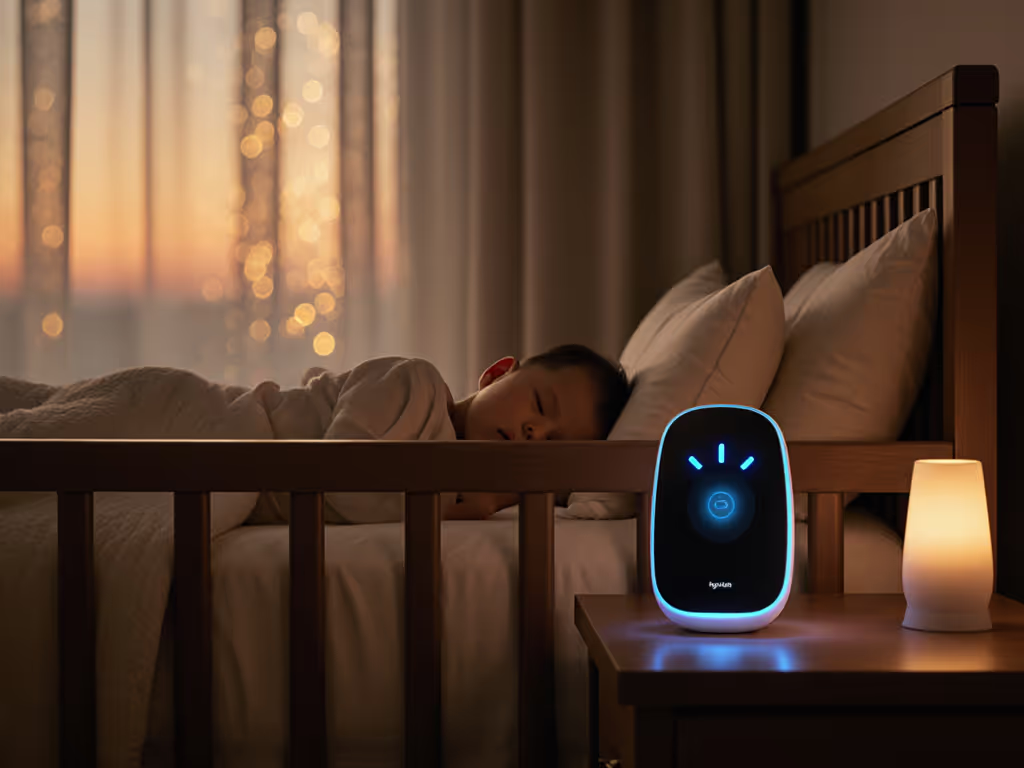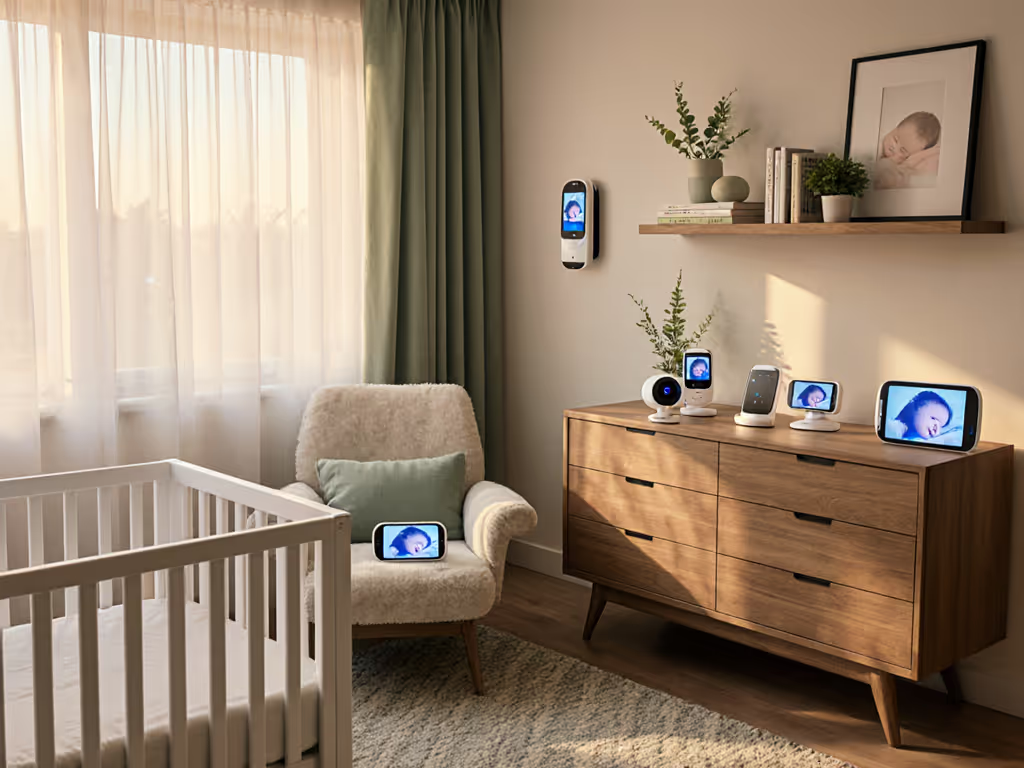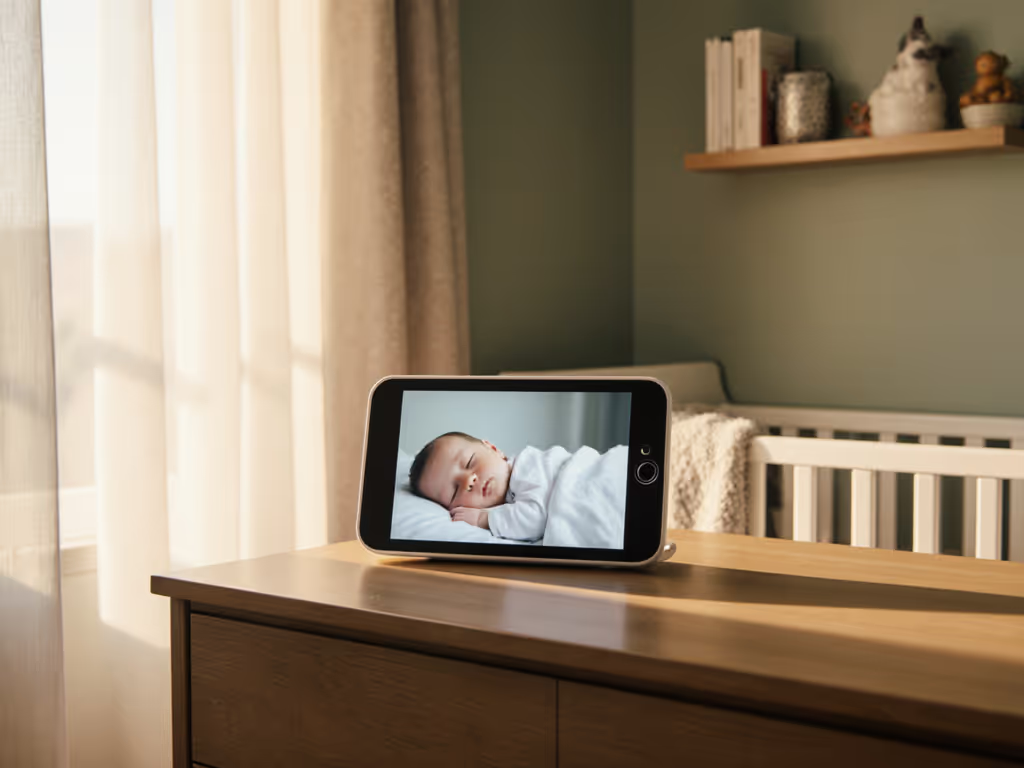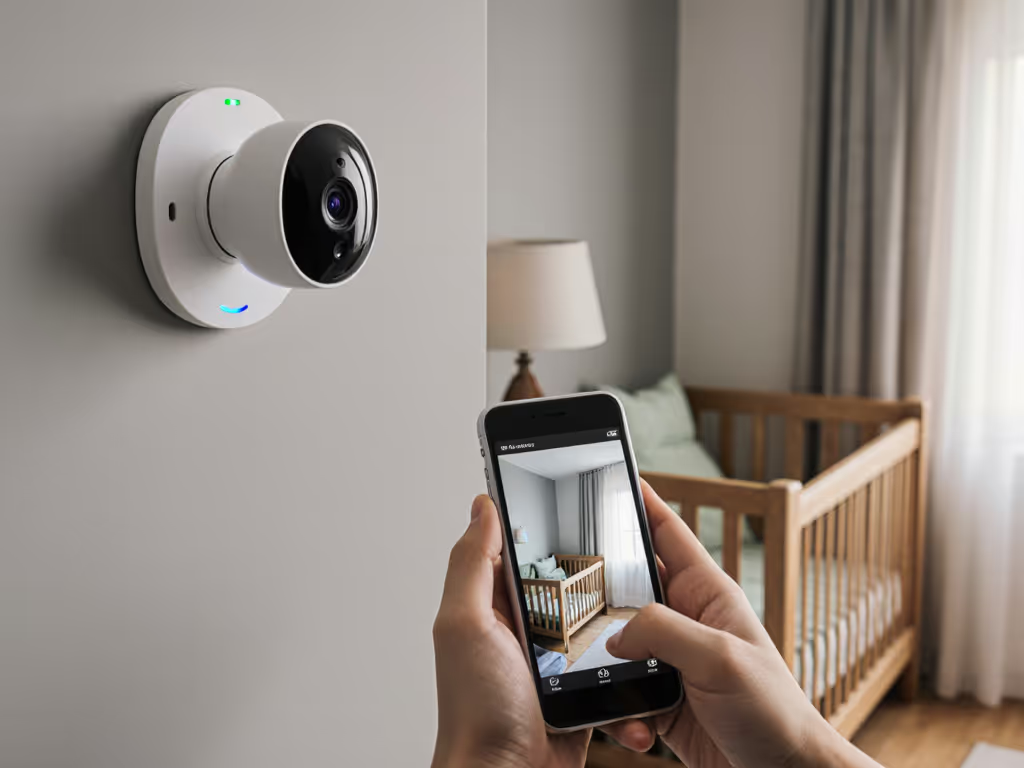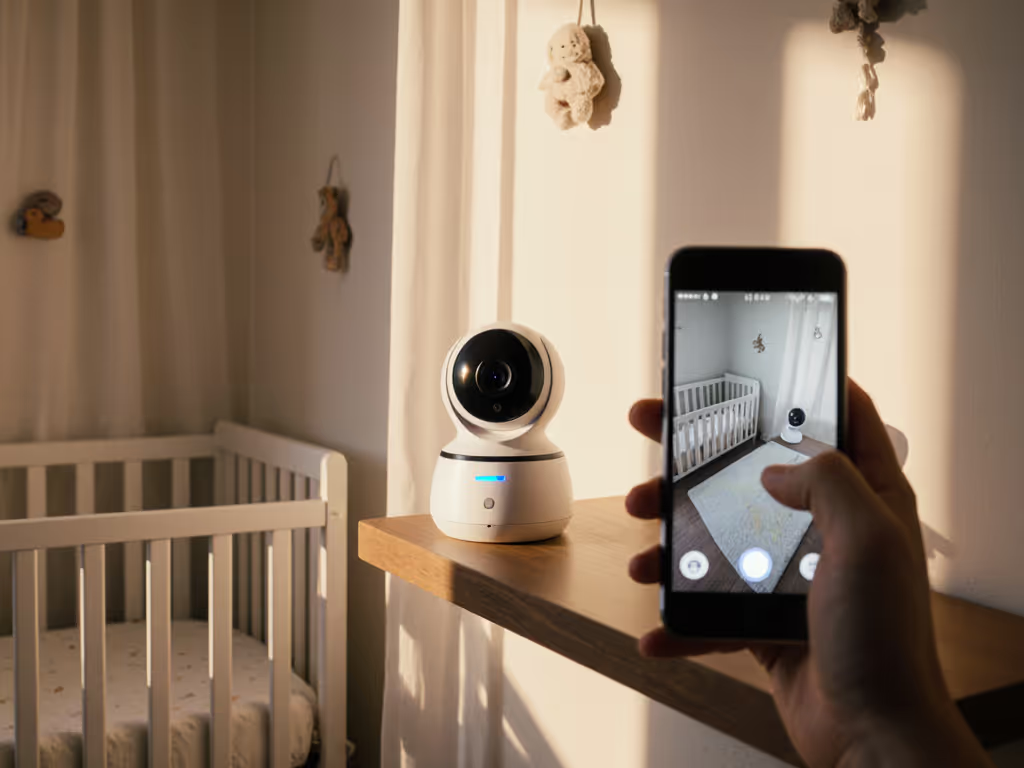
Baby Monitor Comparison Workflow: Step-by-Step Guide
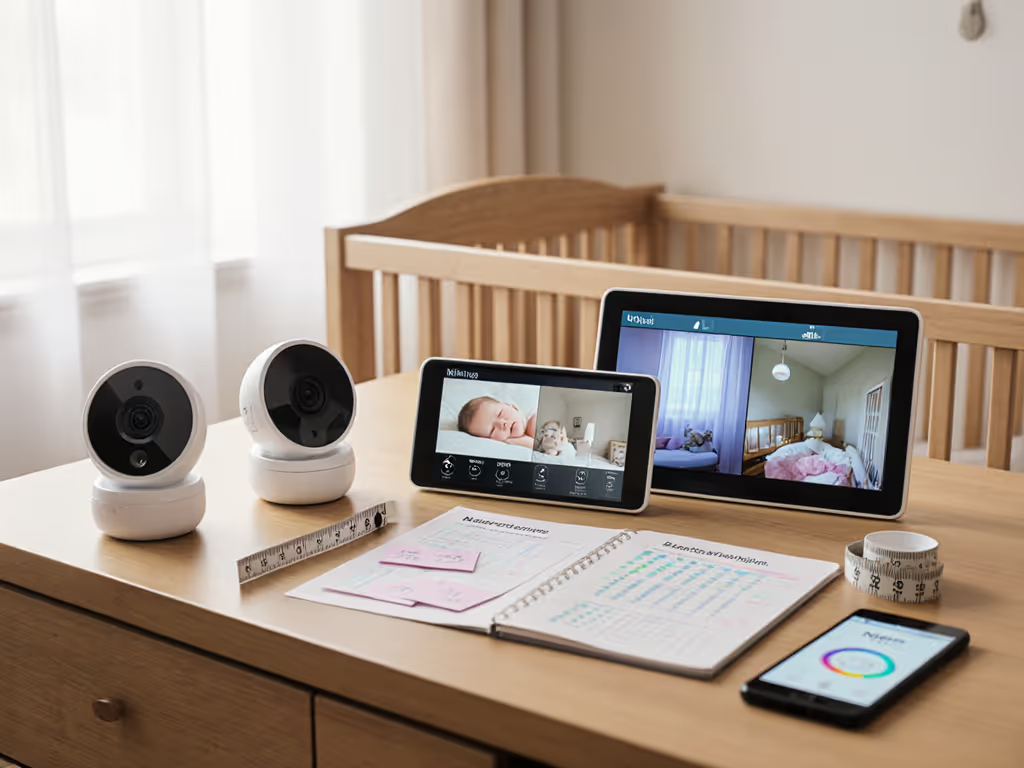
Did you know that over 60 percent of parents have concerns about digital privacy when using baby monitors? With smarter devices entering nearly every home, choosing the right monitor goes far beyond picking fancy features. Understanding your family's monitoring needs and personal privacy requirements helps you stay a step ahead of security risks while creating a safer environment for your child. Solid priorities and careful research will guide you toward a monitor that fits perfectly into your daily life.
Quick Summary
| Key Point | Explanation |
|---|---|
| 1. Define monitoring priorities first | Identify what features matter most for your family, such as security, video quality, and range. |
| 2. Create a shortlist of monitors | Use multiple sources and criteria to find 3 to 5 monitors that match your prioritized needs and privacy expectations. |
| 3. Evaluate features comprehensively | Compare monitors on key dimensions including security, usability, and performance to find the best fit. |
| 4. Test monitor compatibility | Assess how well monitors work in your home environment by checking signal strength and potential interference. |
| 5. Verify security and usability | Check for strong security measures and ensure the monitor is user-friendly before making your final decision. |
Step 1: Define your monitoring priorities and privacy needs
Before diving into the world of baby monitors, you need a clear roadmap of what matters most for your family's unique situation. Think of this step like creating a personalized safety blueprint that protects both your child and your digital privacy.
Start by asking yourself some fundamental questions about your monitoring needs. Are you most concerned about video clarity? Audio range? Nighttime monitoring capabilities? Or does your top priority revolve around data security and preventing potential digital intrusions?
According to Consumer Reports, many parents underestimate the privacy risks associated with internet connected baby monitors. Some devices have significant security vulnerabilities that could expose your family's most intimate moments. Your goal is to identify monitors that offer robust security features like strong encryption and two factor authentication.
Consider your home environment and lifestyle. A parent working from a small apartment might prioritize compact monitors with strong wifi encryption. Families living in larger homes might need extended range monitors with local network capabilities. Safer For Baby recommends specifically evaluating monitors with AES 256 encryption and regular firmware update mechanisms.
Pro Tip: Create a priority matrix with must have features versus nice to have capabilities. Rank security and privacy features at the top of your list.
As you assess your monitoring priorities, remember that your choices today protect your family's digital safety. The next step will help you translate these priorities into actionable research and comparisons.
Ready to turn these insights into a concrete monitoring strategy? Let's move forward.
Step 2: Gather a shortlist of suitable baby monitors
Now that you have a clear set of priorities, it is time to transform those insights into a practical list of potential baby monitors. Think of this step as your digital detective work where you will hunt down monitors that match your specific needs and privacy expectations.
Start by leveraging multiple research sources. Professional review sites like Parental Guide offer comprehensive roundups of monitors with detailed feature breakdowns. Do not just rely on manufacturer websites. Look for independent reviews that test real world performance and security capabilities.
The Parental Guide highlights advanced monitors like the Miku Smart Baby Monitor as an excellent benchmark. These sophisticated devices offer comprehensive tracking including breathing patterns, sleep analytics, environmental monitoring like humidity levels, and robust security features such as 256 bit encryption. While not every monitor will have such extensive capabilities, use these top tier models as a reference point for your expectations.
Your research should focus on key criteria you established in the previous step. Create a spreadsheet or comparison chart that tracks monitors against your specific requirements. Consider categories like:
Here's a comparison of key criteria to use when shortlisting baby monitors:
| Criteria | Example Features | Why It Matters |
|---|---|---|
| Video & Audio Quality | HD video<br>Clear two-way audio | Monitor baby clearly & respond |
| Connectivity & Range | WiFi support<br>Local modes<br>Extended range | Coverage throughout home |
| Privacy & Encryption | AES 256 encryption<br>Two-factor authentication | Protects family’s digital safety |
| Health & Sensor Features | Breathing tracking<br>Environmental sensors | Extra peace of mind |
| App & Usability | Mobile app<br>Easy interface<br>Notification alerts | User convenience |
| Price & User Ratings | <$200<br>High ratings<br>Reliable support | Fits your budget, trusted reviews |
- Video and audio quality
- Range of connectivity
- Privacy and encryption standards
- Additional tracking features
- Price point
- User reviews and reliability ratings
Pro Tip: Set a strict budget range before diving into research to prevent getting overwhelmed by premium options.
Remember that your shortlist should include 3 to 5 monitors that closely match your priorities. Do not aim for perfection but for the best possible match given your specific family needs.
With your initial monitor shortlist ready, you are now prepared to dig deeper into detailed comparisons and specifications.
Step 3: Evaluate monitor features using comparison tools
With your initial shortlist in hand, you are now ready to dive deep into a comprehensive feature comparison that goes beyond surface level specifications. This step transforms you from a casual shopper into a strategic baby monitor investigator.
Consumer Reports offers a comprehensive framework for comparing monitors across multiple dimensions. Start by creating a detailed matrix that evaluates critical features like video resolution, two way communication capabilities, multiple camera support, and advanced tracking technologies. Consider how each monitor performs in real world scenarios not just on paper.
Your comparison should include both technical performance and security considerations. BabyMonitor101 recommends examining specific security dimensions such as radio frequency emission levels, encryption protocols, and firmware update frequency. Pay special attention to how monitors handle remote access security and data protection.
Key feature categories to compare include:
- Video quality and resolution
- Audio clarity and range
- Connectivity options
- Night vision capabilities
- Sensor technologies
- Health tracking features
- Privacy and encryption standards
- Mobile app functionality
- Battery life and power management
Pro Tip: Be cautious about health tracking features. The FDA has issued warnings about devices claiming to monitor vital signs without clinical validation.
Remember that no single monitor will be perfect. Your goal is finding the best overall match that balances performance, security, and your specific family needs. Prioritize monitors that offer transparent security practices and regular software updates.
With your detailed comparison complete, you are now prepared to make an informed decision about the right baby monitor for your family.
Step 4: Test product compatibility with your home environment
Now comes the practical reality check where you will assess how well your chosen baby monitors actually perform in your unique living space. Think of this step as a real world audition where each potential monitor proves its worth beyond marketing promises.
Safer For Baby emphasizes the critical importance of understanding signal interference potential in your home environment. Electronic devices operating on 2.4 GHz frequency bands can disrupt monitor performance. Your mission is to map out potential signal challenges before making a final purchase.
Start by conducting a comprehensive home signal assessment. Walk through each room where you plan to use the monitor and test potential placement locations. Pay attention to walls thickness, electronic device proximity, and potential signal blockers like large metal appliances or dense building materials.
Consider your home layout and communication needs carefully. Apartment dwellers might prioritize compact monitors with strong local signal transmission. Larger homes require monitors with extended range and multiple receiver options. Some key compatibility factors include:
- Signal strength and range
- Wireless interference potential
- Battery performance in different rooms
- Durability across temperature variations
- Ease of setup and reconfiguration
Sleep Training Solutions recommends exploring non WiFi monitors for more reliable performance. These plug and play devices often provide consistent coverage without internet dependency and typically offer longer battery life.
Pro Tip: Purchase monitors from retailers with generous return policies. This allows you to thoroughly test compatibility without financial risk.
Remember that no single monitor works perfectly in every environment. Your goal is finding a solution that adapts smoothly to your specific living situation.
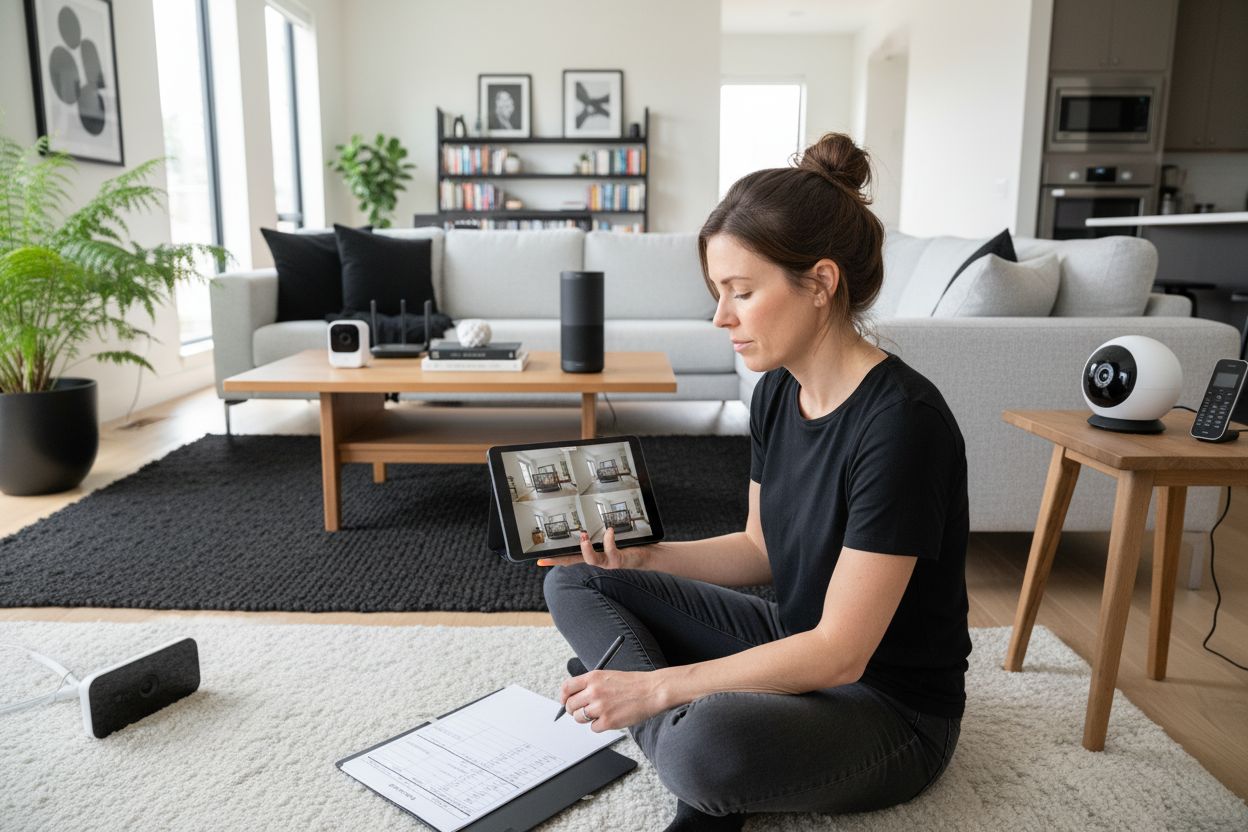
With your compatibility testing complete, you are now ready to make a confident final selection.
Step 5: Verify security, privacy, and usability before final selection
With potential monitors identified, you are now entering the most critical phase of your selection process. This step transforms you from a cautious parent into a digital security expert focused on protecting your family's privacy and safety.
Reuters highlights an exciting development with the U.S. Cyber Trust Mark a voluntary federal label that helps consumers verify the cybersecurity standards of smart devices. Look for monitors that meet these emerging national security credentials as a first line of defense.
Consumer Reports recommends a comprehensive usability and security checklist before making your final selection. Start by thoroughly examining the monitor's password protection mechanisms. Strong default passwords and the ability to customize complex authentication are non negotiable requirements.
Key security verification steps include:
- Enabling multifactor authentication
- Checking firmware update frequency
- Reviewing privacy policy transparency
- Verifying encryption protocols
- Understanding data storage and usage practices
- Evaluating remote access security features
For monitors with health tracking capabilities Consumer Reports suggests consulting pediatricians to validate the medical reliability of any advanced monitoring features. Not all health tracking technologies are created equal and some might provide false reassurance.
Pro Tip: Create a dedicated secure email address specifically for device registration to minimize potential data exposure.
Remember that usability matters as much as security. A monitor with robust protection that feels complicated will likely be used incorrectly or inconsistently. Choose a solution that balances strong security with intuitive user experience.
You are now prepared to make a confident final selection that prioritizes your family's digital safety.
Take the Stress Out of Baby Monitor Comparisons with Trusted Expertise
Do you worry about accidentally choosing a baby monitor that exposes your family’s private moments or falls short within your home’s unique signal environment? The article above highlights the overwhelming choices, privacy risks, and technical confusion parents face when trying to balance advanced features with strong security. Many families feel uncertain navigating product claims about encryption, data storage, and real-world compatibility. You should never have to sacrifice your child’s safety or your own digital privacy just to keep an eye on your baby.
Let BabyMonitorsForParents.pro guide your next move. Our expert buying guides, detailed product reviews, and hands-on comparison tools will help you filter through the noise. Discover which monitors deliver true privacy, easy setup, and reliable performance in homes just like yours. Do not wait until a data breach or technical letdown happens in your household. Get immediate clarity and confidence by exploring our step-by-step resources and unbiased recommendations now.
![]()
Frequently Asked Questions
How do I define my monitoring priorities when comparing baby monitors?
Start by assessing your family’s unique needs, including priorities like video clarity, audio range, and data security. List and rank features using a matrix to help clarify which aspects are essential vs. optional before you begin your search.
What key features should I include in my baby monitor shortlist?
Include criteria such as video and audio quality, connectivity range, privacy and encryption standards, and health tracking features. Aim for a shortlist of 3 to 5 monitors that closely align with your established priorities to make your evaluation manageable.
How can I compare the features of different baby monitors effectively?
Create a detailed comparison matrix that assesses critical features such as resolution, audio range, and privacy protocols. Evaluate each monitor on its performance and security capabilities to determine which one meets your family’s needs best.
What should I check for in terms of compatibility with my home environment?
Analyze your living space for potential signal interference and consider signal strength in various rooms. Conduct a walk-through to test for electronic interference from devices like WiFi routers and appliances, and choose a monitor that performs well throughout your home.
How can I verify the security and privacy of my chosen baby monitor?
Examine features like password protection, firmware update frequency, and data encryption protocols. Make sure to review the monitor’s privacy policy and test its multifactor authentication to ensure your family’s digital safety before finalizing your decision.
What steps should I take if a baby monitor does not work well in my home environment?
Opt for retailers that offer generous return policies so you can test the monitor. If it doesn't meet your needs, return it within the specified period, and be prepared to explore alternative options that fit your living situation better.

